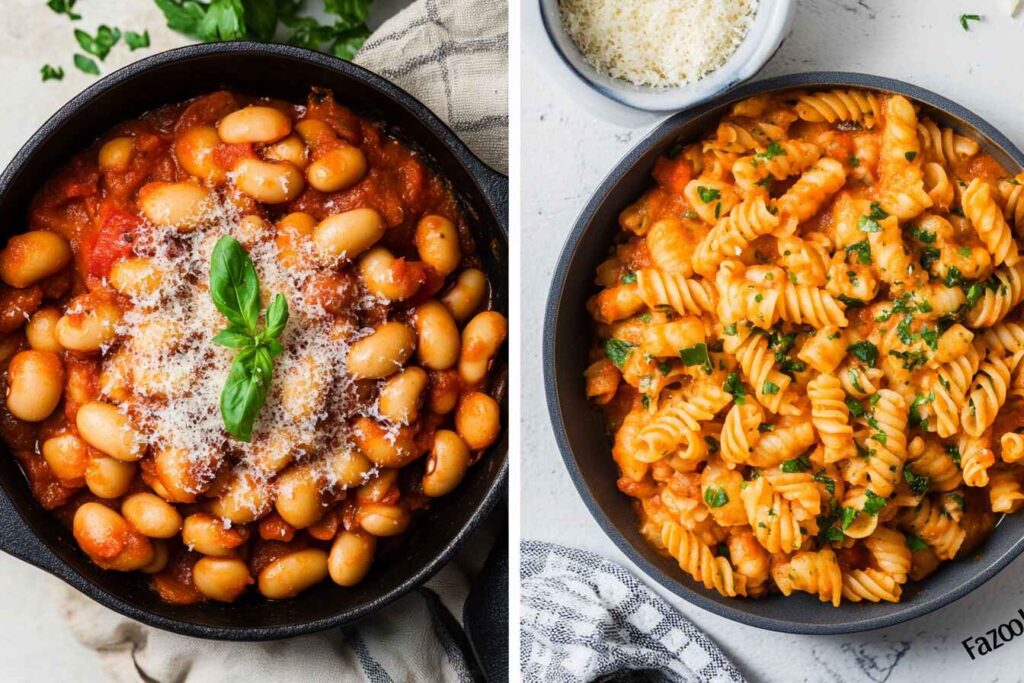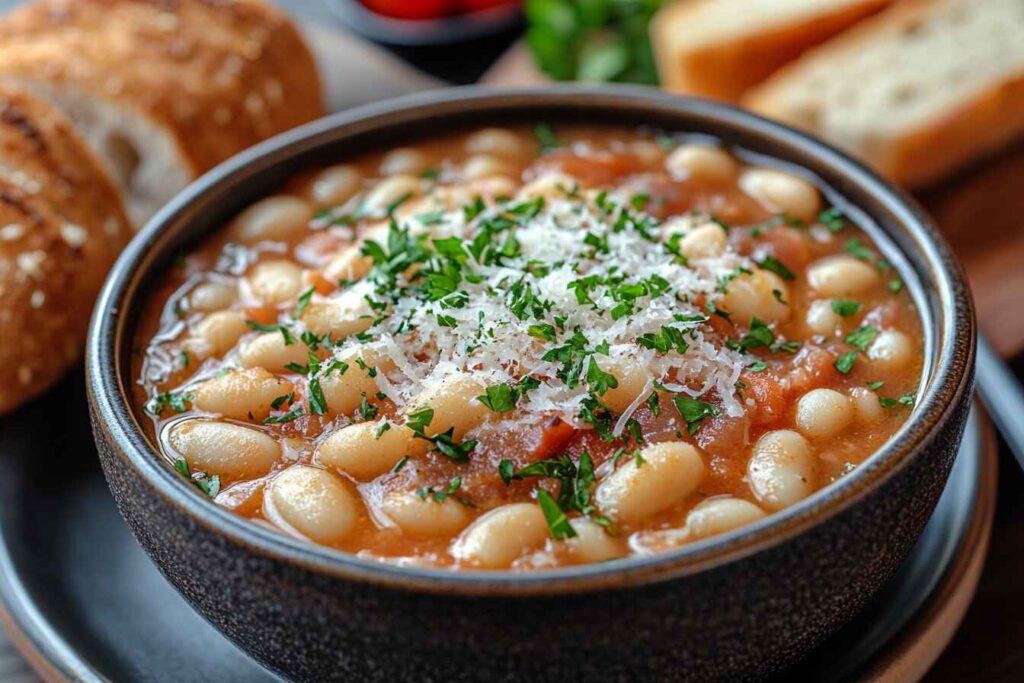Have you ever come across the terms Fazool and Fagioli and wondered if they mean the same thing? You’re not alone! Many food lovers, especially those outside of Italy, often get confused about whether these words refer to a type of bean, a dish, or something else entirely. And let’s be honest—Italian food terminology can sometimes feel like learning a whole new language!
But don’t worry, we’re here to clear up the confusion once and for all. By the end of this article, you’ll know exactly what fazool and fagioli mean, how they are related, and how to use them correctly. Plus, we’ll dive deep into the cultural and culinary significance of these words. So grab a snack and let’s dig in!
Understanding the Confusion Between Fazool and Fagioli
Before we get into the nitty-gritty details, let’s address the main reason why these two words cause so much confusion.
- First, Fagioli is an Italian word that translates to “beans” in English.
- Fazool, on the other hand, is a slang term or a mispronunciation of fagioli, mainly used in Italian-American communities.
- Both words are strongly associated with a famous dish called Pasta e Fagioli (often pronounced “Pasta Fazool” in the U.S.).
So, is fazool just a lazy way of saying fagioli? Well, kind of! But there’s more to it than that.
The Meaning of Fazool and Fagioli
What Does “Fazool” Mean?
“Fazool” isn’t an official Italian word. Instead, it’s an Americanized pronunciation of the word fagioli, which means beans in Italian. Italian immigrants, particularly from the southern regions like Naples, pronounced it more like “fa-zool”, and the pronunciation stuck. So if you hear someone say “pasta fazool,” they’re actually referring to Pasta e Fagioli, a delicious and hearty bean and pasta dish.
What Does “Fagioli” Mean?
Now, let’s talk about the real Italian word—Fagioli. In standard Italian, fagioli (pronounced fah-JYOH-lee) is the plural form of fagiolo, which simply means “bean.” This term covers a variety of beans used in Italian cooking, from cannellini to borlotti.
Fun Fact: In Italy, the specific type of bean is usually mentioned in recipes. For example, fagioli cannellini refers to white beans, while fagioli borlotti are speckled beans often used in soups.
The Linguistic Origins of Both Terms
Language evolves in interesting ways, and fazool is a great example of how dialects shift over time. The Italian-American pronunciation of fagioli was influenced by Neapolitan dialects, where the “-gli” sound is often softened or dropped. As Italian immigrants settled in the U.S., their way of saying fagioli turned into fazool.
So, when someone says “pasta fazool,” they’re using a Neapolitan-inspired, Americanized version of the original Italian dish name. Pretty cool, right?

Fazool vs. Fagioli: The Key Differences
The Regional and Cultural Influences
To truly understand why these words sound different, we need to look at Italian dialects. Italy has many regional dialects, and some of them differ so much that native Italians from different areas might struggle to understand each other!
- In Southern Italy, particularly in Naples, fagioli is pronounced more like “fazool.”
- In Standard Italian, fagioli maintains its original pronunciation: fah-JYOH-lee.
- In Italian-American communities, fazool became the commonly used term, especially in the U.S.
So if you ever visit Italy and ask for “fazool,” you might get a confused look—unless you’re in a heavily Neapolitan area!
Difference in Pronunciation and Usage
| Word | Pronunciation | Meaning | Where It’s Used |
|---|---|---|---|
| Fagioli | fah-JYOH-lee | Beans (plural) | Italy |
| Fazool | fa-ZOOL | Americanized slang for fagioli | United States (Italian-American communities) |
The Dish vs. The Ingredient: Clarifying the Confusion
Another major reason people get confused is that fagioli refers to a food ingredient (beans), while fazool is mostly used in reference to a dish—Pasta e Fagioli.
- If someone in Italy says “fagioli,” they’re talking about beans in general.
- If someone in the U.S. says “fazool,” they’re probably talking about the famous bean and pasta soup.
This distinction is key to understanding the difference between these two words. One is a general term, and the other is more connected to a specific dish.
The Culinary Importance of Fagioli (Beans)
Types of Beans Used in Italian Cooking
Beans are a huge part of Italian cuisine. Some of the most commonly used beans in Italian dishes include:
- Cannellini Beans – White beans with a mild flavor, perfect for soups and salads.
- Borlotti Beans – Reddish speckled beans often used in stews.
- Lupini Beans – Typically eaten as a snack, especially during festivals.
- Fava Beans – Used in fresh salads and purees.
Why Beans Are a Staple in Mediterranean Diets
Beans are an essential part of the Mediterranean diet, and for good reason! They’re packed with nutrients, super affordable, and incredibly versatile. Plus, they provide a great source of protein, especially in vegetarian and vegan dishes.
The Nutritional Benefits of Fagioli
| Nutrient | Per 1 Cup (Cooked) |
|---|---|
| Protein | 15g |
| Fiber | 13g |
| Iron | 4mg |
| Calories | 225 |
See why Italians love their beans? They’re not just delicious but also a powerhouse of nutrition!
The Dish: Pasta e Fagioli (or Pasta Fazool)
Now that we’ve cleared up the linguistic confusion, let’s talk about one of Italy’s most famous comfort foods—Pasta e Fagioli. If you’ve ever heard someone say “Pasta Fazool,” they were actually talking about this dish, which translates to “Pasta and Beans.” And trust me, if you haven’t tried it yet, you’re missing out on one of the most delicious and heartwarming bowls of food ever created.
Traditional Ingredients and Variations
Like many classic Italian dishes, Pasta e Fagioli is all about simple, humble ingredients that come together to create something magical. This dish started as a “poor man’s meal,” meaning it was made using pantry staples that were affordable yet packed with flavor.
Did you know? Pasta e Fagioli was originally a peasant dish in Italy, made without meat because beans provided plenty of protein.
Here’s what you’ll typically find in an authentic Pasta e Fagioli recipe:
| Ingredient | Quantity | Notes |
|---|---|---|
| Olive Oil | 2 tbsp | For sautéing |
| Onion | 1 medium, diced | Adds sweetness |
| Garlic | 3 cloves, minced | For rich aroma |
| Carrots | 1 large, diced | Adds depth of flavor |
| Celery | 2 stalks, diced | Essential in Italian soups |
| Canned Tomatoes | 1 can (14 oz) | Crushed or diced |
| Vegetable or Chicken Broth | 4 cups | For the base |
| Cannellini Beans | 2 cups, cooked | Traditional choice |
| Dried Pasta | 1 cup | Small pasta like ditalini or elbow |
| Salt & Pepper | To taste | Essential seasoning |
| Fresh Parsley | 2 tbsp, chopped | For garnish |
| Parmesan Cheese | ¼ cup, grated | For topping |
How Different Regions Prepare It Differently
While the core ingredients remain the same, different regions in Italy have their own twist on Pasta e Fagioli.
- Northern Italy: Uses **borlotti beans** and a thicker, almost stew-like consistency.
- Southern Italy: Prefers **cannellini beans** with a brothier texture.
- Veneto Region: Often includes **pancetta or prosciutto** for extra flavor.
- Neapolitan Style (Pasta Fazool): Sometimes has **crushed red pepper** for a spicy kick.
Why It’s Called “Pasta Fazool” in Some Places
As we discussed earlier, “fazool” comes from the Neapolitan dialect, and since many Italian immigrants in America were from Naples, “Pasta Fazool” became the widely used term. Even famous crooner Dean Martin sang about it in his song “That’s Amore”:
“When the stars make you drool just like pasta fazool, that’s amore!” 🎶
So if you hear someone say “Pasta Fazool,” they’re just using an old-school, Italian-American way of referring to this dish.
Common Problems When Making Pasta e Fagioli (And Solutions)
While Pasta e Fagioli is a simple dish, there are a few things that can go wrong. But don’t worry—I’ve got the solutions to help you make it perfect every time!
Problem #1: Why Is My Pasta e Fagioli Too Thick or Too Thin?
One of the most common mistakes is getting the consistency wrong. Sometimes, it turns out too watery, and other times, it’s so thick you can practically stand a spoon in it.
- If it’s too thick: Add a little more broth or water to thin it out.
- If it’s too thin: Mash some of the beans or let it simmer longer to naturally thicken.
Problem #2: How to Fix an Overly Salty or Bland Flavor?
Seasoning is key to a great bowl of Pasta e Fagioli, but it’s easy to mess up.
- If it’s too salty: Add a peeled raw potato to absorb some salt, or dilute with more broth.
- If it’s too bland: Add a splash of lemon juice, extra Parmesan, or a drizzle of olive oil.
Problem #3: The Best Type of Beans to Use for an Authentic Taste?
The type of beans you use will affect the texture and taste. While some people use kidney beans or navy beans, the most authentic options are:
- Cannellini Beans: Mild, creamy, and traditional.
- Borlotti Beans: A bit more nutty and earthy.
Pro Tip: If using dried beans, soak them overnight for the best texture.
Fun Facts About Fazool and Fagioli
Before we move on to our final part (where we’ll provide an easy Pasta e Fagioli recipe), here are some fun facts you might enjoy:
- Pasta e Fagioli is sometimes called **”pasta fazool”** in old Italian-American neighborhoods.
- It’s one of the few Italian dishes that doesn’t always require **cheese** (but hey, who’s stopping you?).
- Italians believe that **the best flavor comes the next day**—so leftovers are highly recommended!
- This dish has been around for **hundreds of years**, originally made with whatever beans and pasta people had on hand.
How to Make an Authentic Pasta e Fagioli
Now that we’ve covered the history, the differences between fazool and fagioli, and the common mistakes, it’s time for the best part—cooking it yourself! Below, you’ll find an easy and **authentic** Pasta e Fagioli recipe that’s packed with flavor and perfect for cozy nights.
Traditional Italian Pasta e Fagioli Recipe
Serving Size: 4-6 people Prep Time: 15 minutes Cook Time: 45 minutes Total Time: 1 hour
Ingredients
| Ingredient | Quantity |
|---|---|
| Olive Oil | 2 tbsp |
| Onion | 1 medium, finely diced |
| Garlic | 3 cloves, minced |
| Carrot | 1 large, diced |
| Celery | 2 stalks, diced |
| Crushed Tomatoes | 1 can (14 oz) |
| Vegetable or Chicken Broth | 4 cups |
| Cannellini Beans (or Borlotti Beans) | 2 cups, cooked |
| Ditalini Pasta (or Small Pasta) | 1 cup |
| Salt & Black Pepper | To taste |
| Crushed Red Pepper (Optional) | 1/2 tsp |
| Fresh Parsley | 2 tbsp, chopped |
| Parmesan Cheese | 1/4 cup, grated |
Instructions
- Heat the olive oil in a large pot over medium heat. Add the **onion, garlic, carrot, and celery**. Sauté for 5 minutes until the veggies are soft.
- Add the tomatoes** and stir well. Let it cook for another 5 minutes to enhance the flavor.
- Add the broth and bring it to a gentle boil.
- Stir in the beans** and let them simmer for 10 minutes.
- Add the pasta and cook until al dente (usually 8-10 minutes). Stir occasionally so it doesn’t stick.
- Season with salt, pepper, and red pepper flakes (if using).
- Remove from heat and stir in fresh parsley.
- Serve hot, topped with grated Parmesan cheese and a drizzle of olive oil. Enjoy!
Pro Tips for the Best Pasta e Fagioli
- Want a thicker soup? Mash some of the beans before adding them.
- Love a richer flavor? Add a Parmesan rind while simmering and remove it before serving.
- Making it ahead? Cook the pasta separately and add it just before serving to prevent sogginess.
- Prefer a meaty version? Brown some pancetta or bacon with the onions for extra depth.

Final Thoughts on Fazool vs. Fagioli
By now, you should be an expert on the **difference between fazool and fagioli**! Let’s do a quick recap:
- Fagioli is the correct Italian word for beans.
- Fazool is an Americanized pronunciation used mainly in Italian-American communities.
- Pasta e Fagioli is the famous Italian soup that’s often called “Pasta Fazool” in the U.S.
- This dish is **healthy, budget-friendly, and packed with flavor**—perfect for any season.
Why You Should Try Pasta e Fagioli
Not only is it delicious, but it’s also a **perfect dish for meal prep, family dinners, or cozy nights in**. Plus, it’s a fun way to experience a little piece of Italian culture in your own kitchen.
What’s Next?
If you enjoyed learning about Pasta Fazool, why not try other classic Italian comfort foods? Some great options include:
- Minestrone Soup – Another hearty Italian favorite.
- Eggplant Parmesan – A delicious baked dish with layers of cheese.
- Homemade Lasagna – Because who doesn’t love layers of pasta and sauce?
Now it’s your turn! Try this recipe and let me know how it turns out. Do you prefer the Italian way (Pasta e Fagioli) or the American-Italian version (Pasta Fazool)? Share your thoughts in the comments!
Buon Appetito! 🍝🇮🇹

